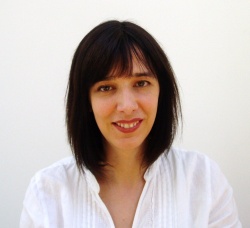MALDI-TOF
Identifying a single isolate in minutes
When trialled in Swansea, Wales, Matrix Assisted Laser Desorption Ionisation – Time of Flight (MALDI-TOF) demonstrated sufficient advantages over conventional methods to be introduced into routine practice.

Dr Angharad Davies, Clinical Associate Professor and Honorary Consultant Microbiologist at Swansea University Medical School, highlighted the benefits and advantages for microbiology from this particular mass spectrometry during the national meeting of the Association for Clinical Chemistry and Laboratory Medicine, in Cardiff this June. She outlined the clinical evaluation of the Bruker MALDI-TOF and Biotyper software system carried out by Public Health Wales (PHW) Swansea and Swansea University Medical School, when the system was first introduced. PHW Wales Microbiology Swansea was the first clinical microbiology laboratory in the UK to test the system in 2009. Following its success, the system was introduced into routine practice in PHW microbiology across Wales.
In addition to a diagnostic evaluation, the Swansea team looked at MALDI-TOF’s ability to distinguish between strains of the same bacterial species, with promising results. There have been a number of advances in this area since. The system has enhanced microbiology in a number of ways. ‘MALDI-TOF, used with the software packages now available, allows very rapid and accurate identification of most bacterial species,’ she said. ‘It is much faster than methods that rely on an overnight culture step – a single isolate can be identified in minutes. The hardware is costly but the day-to-day consumable costs are very small compared to other methods.’ In use, a laser beam is directed at a bacterial isolate suspended in a chemical matrix, Davies explained. The matrix lyses the cell wall and extracts the proteins, which become separated, and embedded in the dried crystal matrix. In practice, this means the bacterial colony is suspended in matrix solution and then spotted onto a credit-card-size metal target plate, which accommodates 96 such spots.
The matrix absorbs the laser energy and desorption results - a rapid explosive evaporation that carries the proteins into the gaseous phase. ‘As the matrix is acidic it ionises the proteins giving them a positive charge. The resulting stream of ionised proteins is detected by the equipment, which generates a species-specific spectrum based on mass/charge ratio of its proteins,’ she said. ‘Clinicians can get a reliable same-day identification of a cultured isolate instead of waiting for 24 hours. This can be very helpful in clinical management as it helps to indicate the likely clinical significance of the isolate, and antibiotic susceptibilities are much more predictable once the bacterial species is known.’
In terms of cost and efficiency for hospitals it allows better empirical antibiotic choices and, in the lab, reduces consumable costs considerably once the initial outlay has been made. ‘It has aided clinical decision-making which should result in better antibiotic choice for the patient,’ she said. ‘This leads to more effective treatment more quickly.
In Wales, all PHW microbiology labs now have access to MALDI-TOF. However, Davies stressed: ‘We need to bear in mind that the cost of the equipment means it is not present on every site – isolates now have to be transported in a timely fashion to a lab with MALDI-TOF, meaning that reliable and efficient transport arrangements need to be in place, and a reliable reporting system for results.
‘In addition, antibiotic susceptibility testing has to be performed separately, meaning there is still another overnight culture step before definitive susceptibility results are available.’ However, there is one other advantage, through the introduction of the All-Wales LIMS (Laboratory Information Management System), results entered in one site are accessible at all PHW lab sites.
PROFILE:
Dr Angharad Davies is Clinical Associate Professor and Honorary Consultant Microbiologist at Swansea University Medical School, where she leads the infection and immunology group teaching for graduate entry students. Her key research interests include Cryptosporidium and mycobacterial infection.
19.06.2015











